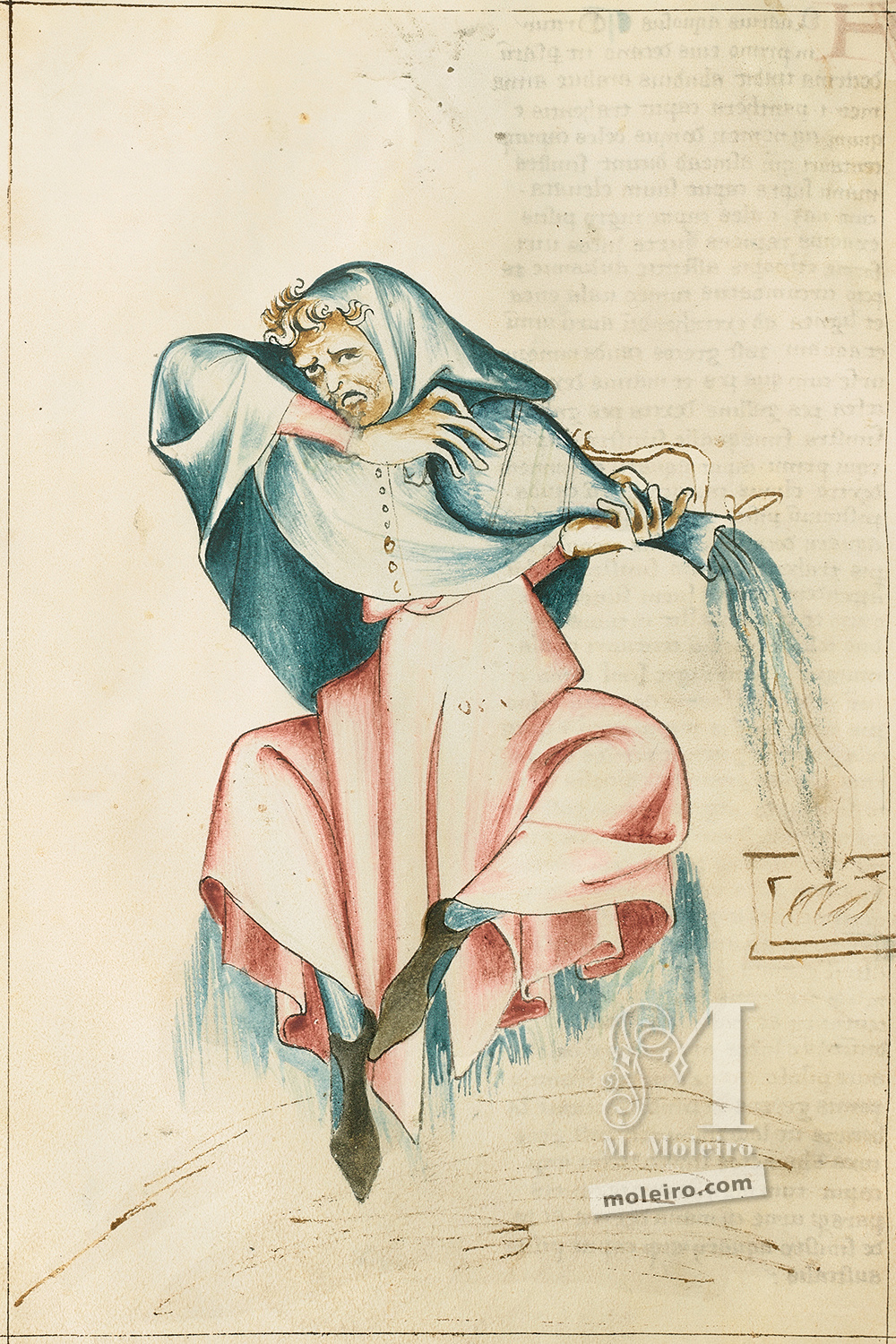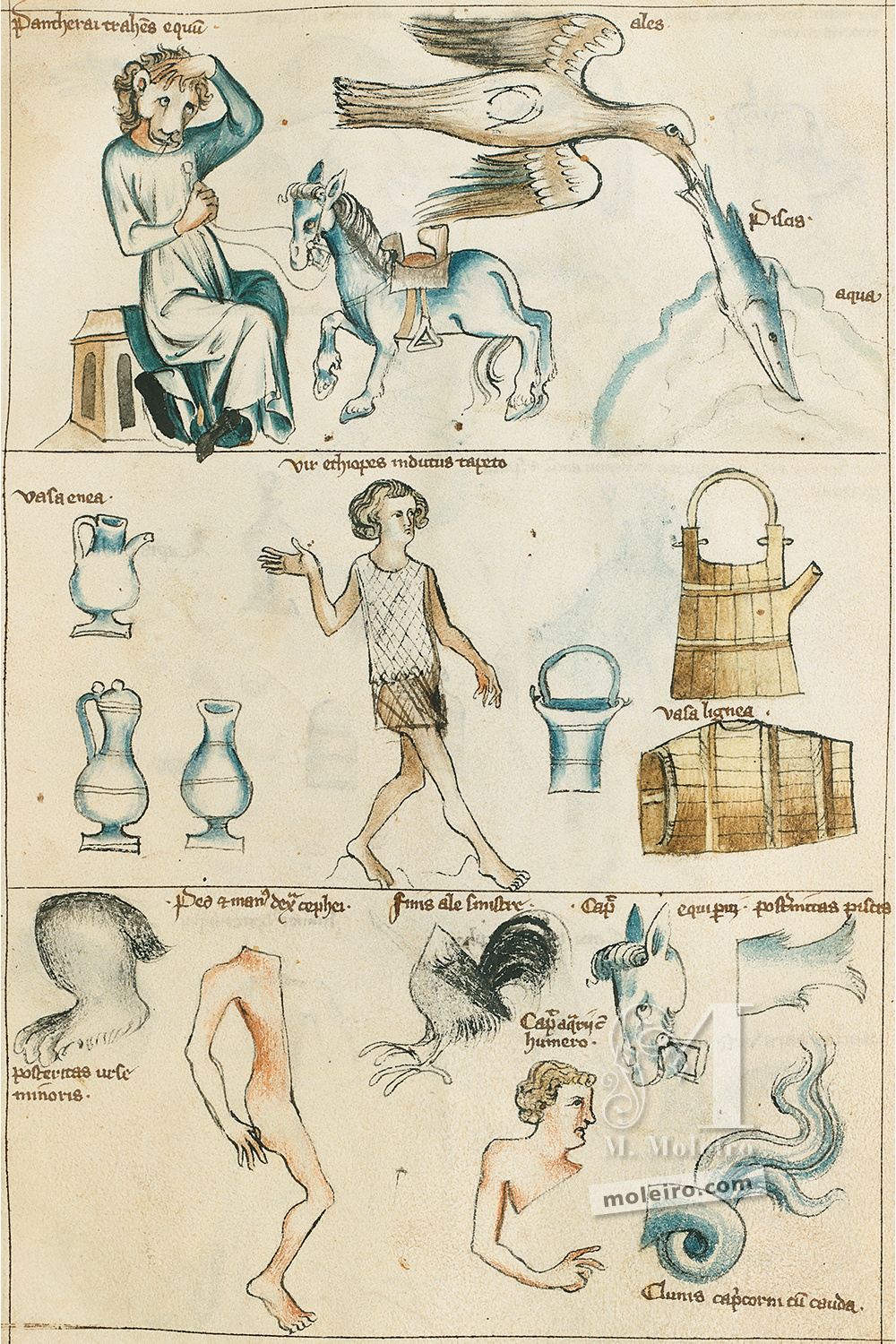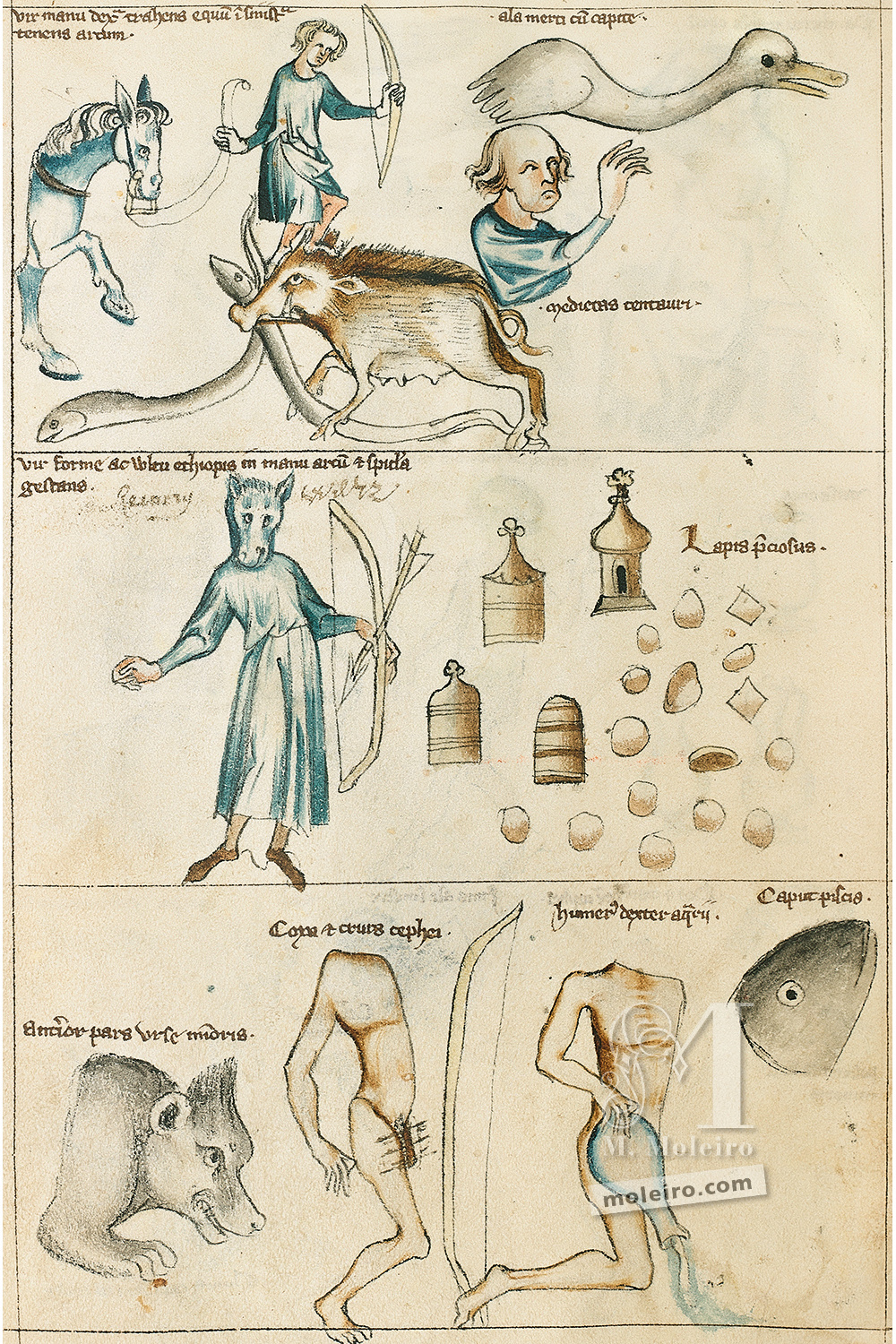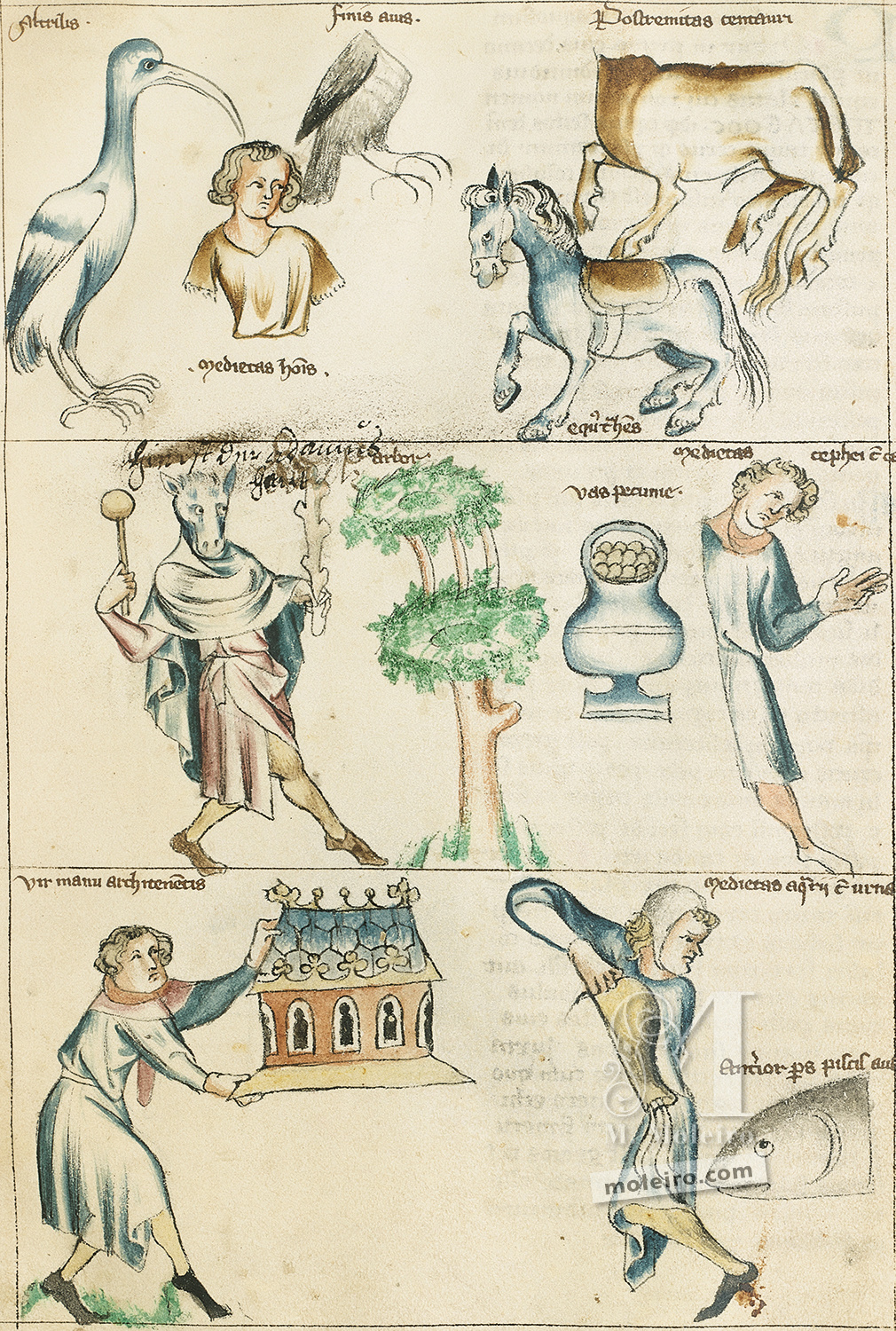
An excerpt from Kristen Lippincott's introduction to Liber astrologiae (Abu Ma'shar Treatise), a 14th-century manuscript and its beautiful medieval imagery.
The incipits of the prologue and of the first chapter of the manuscript in the British Library, Sloane MS 3983, tell us that it is a copy of the Liber Albumazarus (Liber astrologiae), which has been translated into Latin from the Persian by an otherwise unknown author named Georgius Zothorus Zaparus Fendulus. He describes himself as a sacerdotus (a "priest" or "cleric"), philosopher and courtier:
Incipit prologus viri cognomine georgius zothori zapari fenduli. G. sacerdotis atque philosophi, translatus de persica lingua in latinum. Liber albumazarus.
(f. 1ra )
. . . incipit liber astrologie ut cognomine georgij zapari zothori fenduli. G. sacerdotis, philosophi atque prolatum translatus de lingua persica in latinum.
(f. 1rb)
Taking this list of professions into consideration alongside a stylistic analysis of the earliest surviving manuscript of the text (Paris, Bibliothèque nationale de France, Latin 7330), scholars have proposed that Fendulus was probably a cleric associated with the Sicilian court sometime during the second half of the twelfth century.
The author's prologue begins with a fabricated account of how he came upon the current text during his travels through Babylon and Persia, having already translated numerous texts from Persian and Syriac into Latin. He claims to have translated it from the Persian and Indian languages into Latin and adds that he took great pains to provide a corrected copy of the text. In fact, the bulk of the text has simply been copied from Hermann of Carinthia's Latin translation of Abu Ma'shar's Great Introduction to Astrology.
The text itself opens with a very brief summary of the basic astronomical and astrological knowledge that one might need in order to understand the structure of the cosmos, including a discussion of the planets and their orbs, of the 1022 stars and of the 48 constellations into which the Ancients arranged the stars into recognisable figures from their own mythologies. He also presents a series of astrological concepts, such as the different qualities that the twelve signs of the zodiac possess and bring to bear on events on Earth.
The next section (ff. 3r-30v) is divided into twelve chapters, each of which focuses on one of the twelve signs of the zodiac, beginning with Aries, the Ram, and ending with Pisces, the Fish. Each chapter opens with a text that summarises the astrological qualities of that sign and then lists the constellations or parts of a constellation that are said to rise above the horizon alongside each zodiac sign. These groups of stars were called paranatellonta ("rise beside") or sunanatellonta ("rise with") by the Greeks, who compiled catalogues of the stars that rose above the horizon for each degree of the ecliptic.
Rather than present a long list of paranatellonta for the entire 30° of each sign, Abu Ma'shar follows the tradition of dividing each sign into three equal sections of 10° each. These segments of 10° are usually referred to as "decans" (from the Greek dekanos). In terms of understanding the basic structure of the Sloane manuscript, however, it is useful to know that when Abu Ma'shar was compiling his list, there were several competing traditions in which the astronomical knowledge and astrological lore associated with the paranatellonta were circulating. Since the details of these different traditions varied significantly, Abu Ma'shar decided to present three different versions of this material in parallel and, thus, he describes a series of images associated with the rising of every segment of 10° (or decan) for each zodiacal sign:
In the Latin translation of this passage by Hermann of Carinthia, he has kept all these subtle distinctions, but in the version compiled by Fendulus, he has reduced the credit for these systems into simply: "the Persians", "the Indians" and "the Greeks".



